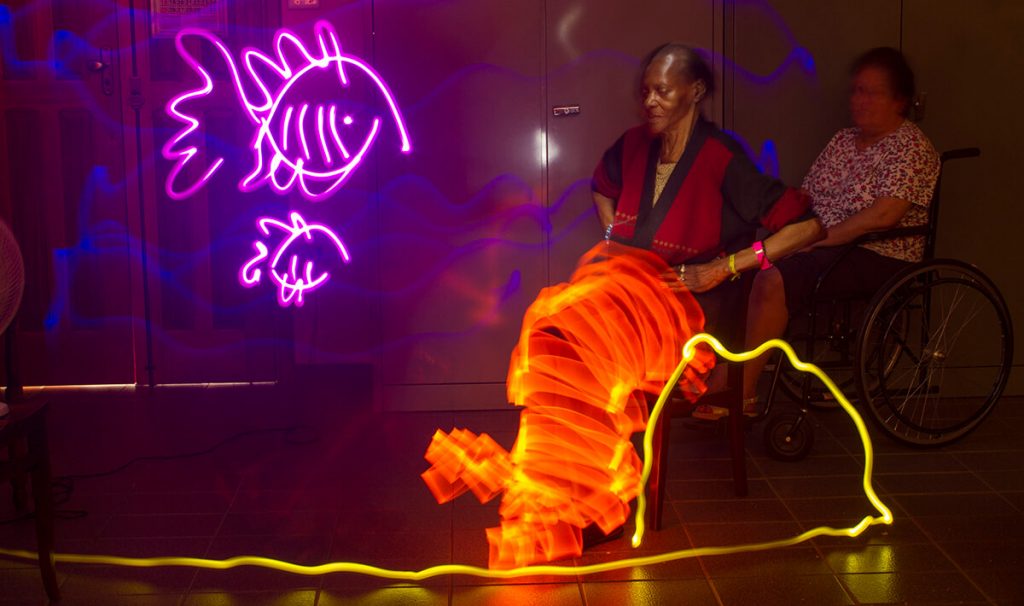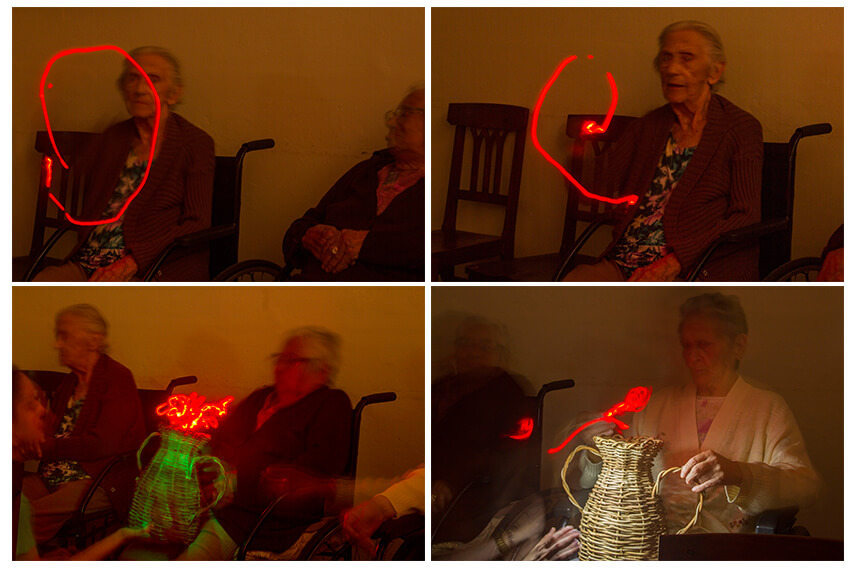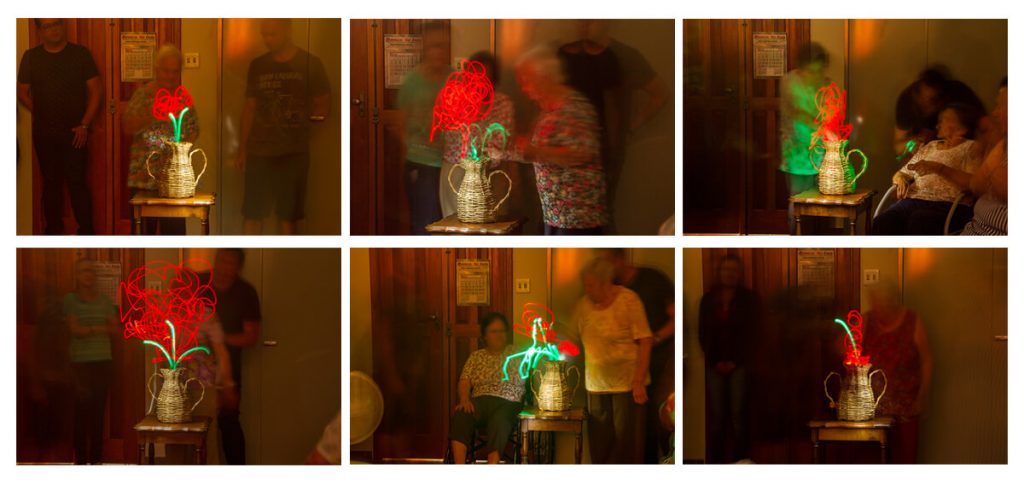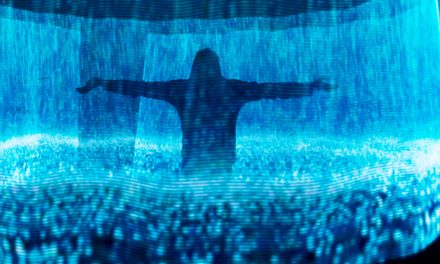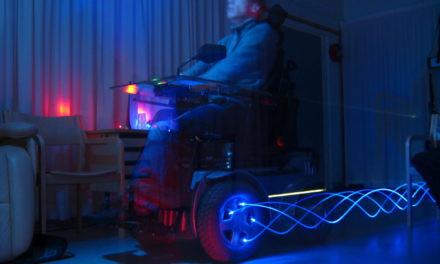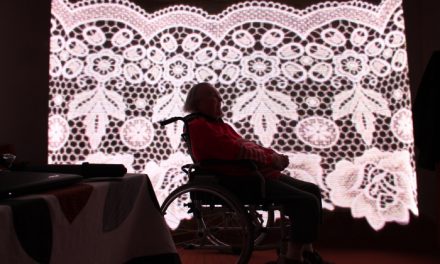
In the asylum, with a lantern in hand, an idea in the head and a small chat
Light painting for memory.
The final phase of life, the one full of grey interpretations, usually is far away from hope, joy, and love. A generation of “orphaned parents of children,” which does not include a pleasant conversation and excludes the “presence for nothing, just to be together,” hinders values and interests sharing, resulting in the assertion of individuality and family life focused on the younger ones.
Liquid Life, says Zygmunt Bauman, Polish sociologist, settled like a feeling of abandonment and despair among the elderly, while the children and grandchildren everywhere wander on social networks at high speed, all very fast, all momentary and finite, full of uncertainties. A routine where to be entertained in your newspapers, magazines, tablets or cell phones, is a sign of investment in the useful time, understanding as useful time that one directed to social networks. Even because the leisure itself, is executed with scheduled time and space determined.
Meanwhile, for the elders, the clock spins slower, as they themselves perceive passing through existence, when the time of enjoyment of life is limited. The priority of “lack of time” is like a daily dagger when the elderly is subject to panic of having no one to count with one day.
While adults have to be aware of everything just in time, older people want to get rid of excess knowledge, keep mind at rest and open to new experiences. Focused on what actually does well, as they have had time for choices to become more selective. While adults have a need to say and tell, the elderly enjoy pricking, remembering and nostalgic nourishment with poetic and contemplative prose in their daily lives.
Thus, the workshops of art therapy with lightpainting for the elderly at the nursing home seeks to encourage to take a risk into something new, where fear and curiosity precede the choice between staying anonymous or go to the dark to paint something invisible. The first step is to make them abandon certainties, along with the traumas of having failed at something in life.
As the singer Raul Seixas used to say:
“When the past died and you did not bury it, jealous and prejudices of love stay, and when you do everything yourself without meaning to, you learn from suffering, pain, and fear. Our head only thinks what it has learned, so try not to trust it, to follow the voice of the heart and to abandon certainties; it is just a matter of trying, for something new can happen. ”
In the absence of fear, we are free. Uncertainty is a door that no one wants to open afraid of what’s on the other side, but those who have the courage to see what is behind the door break mental barriers, which until then were handcuffs created by so old traumas, which over time rust and break easily.
When we challenge and face the uncertainty, a small change in behavior can become an avalanche of self-esteem that comes down the hill to fear breaking all prejudices and clearing the ground. And what is born in this place is the feeling of inner comfort, of joy and self-confidence.
And when two synapses fire together, they stay together. Whenever you feel confident, you will have joy. Whenever you come across the uncertainty, you will have the courage to open the door without fear, canceling the self-sabotage, because the mental process of painting with light is invisible and conscious, you only see the result at the end of the action. Thus, the image resulting from the movement of light in space feeds the short-term memory.
It is necessary to incite the desire for memory, because desire is the conscious expression of necessity and the driving force of conduct, which is dictated by desire, not a necessity.
In the process, the dark unconsciously creates the fear of uncertainty, while the light provides security through sight. However, painting with light does not depend exclusively on the vision, it is the result of the visual unconscious, so painting with light is able to associate with one action, the safety in conducting the light, mentally seeking the reference of the image, establish a harmonious relationship with the dark, replacing fear with joy.
“Joy, which should be inherent in the human being, is concealed by the weight of age and the passage of time, has in lightpainting a trigger that returns the desire for fun and social bonds. And since happiness is an imaginary state, it is possible to establish a relationship between social, personal and spiritual welfare in a single activity.”
Study carried out in partnership with the “Memoirs of a Life Project”, psycho-educator Thainá Moreira, with support from the São Vicente de Paulo Asylum, in Poços de Caldas / MG- Brazil.
With team support:
Laura Bueno – Social Worker
Michele Costa – Psychologist
Bruno Oliveira – Intern
Larissa Lórien Bueno
Jordana L Lourenço
Rodrigo Augusto










